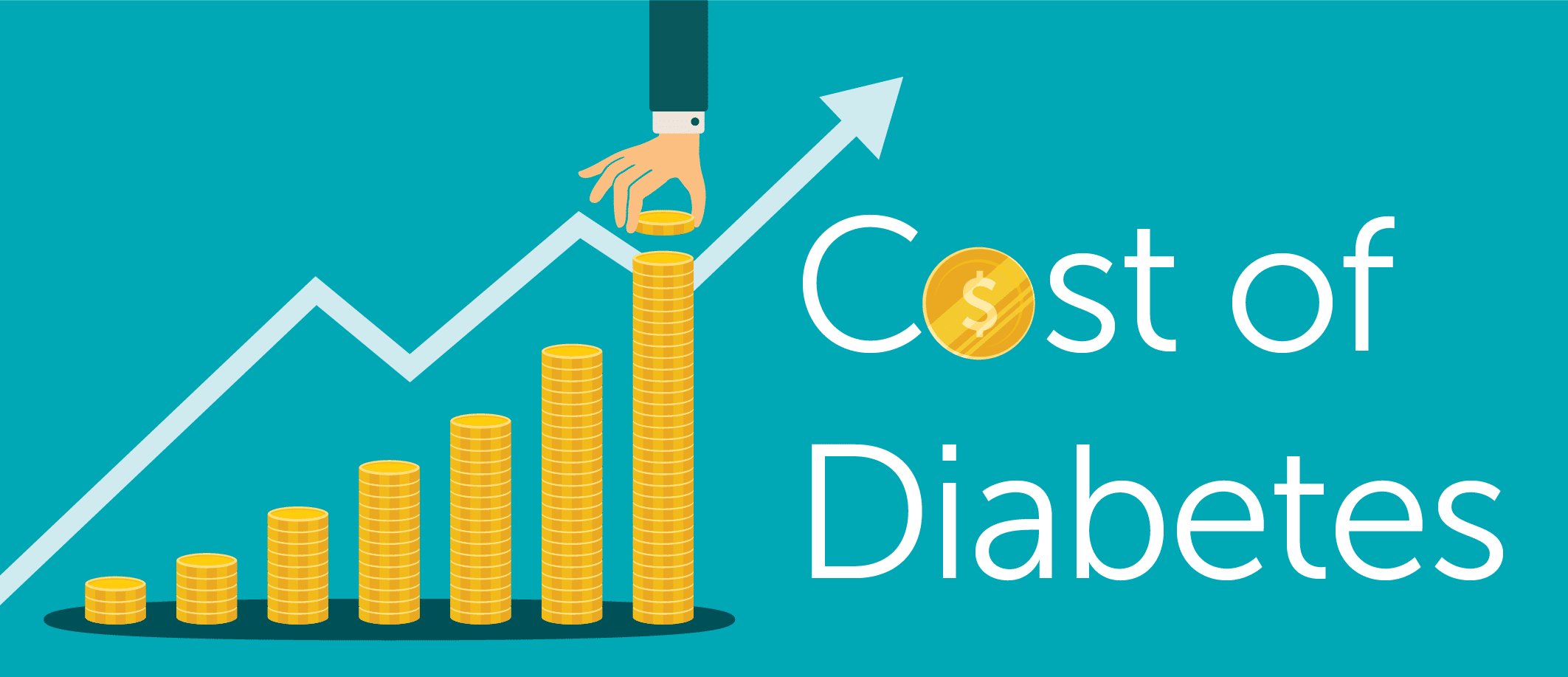Malinda Peeples, MS, RN, CDE, FAADE, is a nationally recognized diabetes educator and clinical and informatics nurse specialist in the field of diabetes care for more than 30 years. Over the last decade she has been advancing the role of digital health solutions to improve care and lessen its burden within healthcare delivery system transformation. At Welldoc, she’s the VP of Clinical Services, Programs and Research. She shares her perspectives on the staggering economic costs of diabetes recently reported by American Diabetes Association (ADA) in this Insights interview.
Has the American Diabetes Association (ADA) historically offered assessments of the economic costs of diabetes in the U.S.?
M. Peeples: Yes, over the last twenty years, starting in 1997, the ADA has provided an assessment about every 5 years. ADA’s main goal with these quinquennial analyses is to provide data to inform and refine public and private efforts to decrease the impact of diabetes on individuals and society-at-large.1
The analyses use a variety of demographic data along with other data sources, for example, Medicare and commercial insurance claims data, long-term care data, and CDC surveys of Americans. Resources that look at employment absenteeism, disability and premature mortality are used to determine indirect costs.
What are considered “direct” and “indirect” costs?
M. Peeples: “Direct” costs are those associated with health care for people with diabetes including: hospitalizations and medical procedures, emergency room visits, outpatient medical care, medications for diabetes and related conditions and complications, long term care and more.
“Indirect” costs include worksite absenteeism, reduced work productivity for those employed, reduced productivity for people who aren’t working, payments for disability, lost income generation due to premature death and more.
What are a few top line statistics from this 2017 report?
M. Peeples: There are a few particularly staggering statistics and I’ll get to these but, as a diabetes educator/clinician I want to highlight the human toll of diabetes first. We need to remember that these costs occur because millions of people have or are at risk for diabetes. They all have family, loved ones and friends that are impacted, emotionally and economically, by diabetes. As the ADA states, “Diabetes imposes a substantial burden on society in the form of higher medical costs, lost productivity, premature mortality and intangible costs in the form of reduced quality of life.1
Simply staggering stats:
- Total estimated costs of diabetes care in 2017 was $327 billion. Direct costs were $237 billion and indirect costs were $90 billion.
- Compared to the 2012 analysis, direct costs rose by 26% and the per person increase in medical costs increased by 14% (with adjustment for general inflation and increased diabetes prevalence).
- One in 11 Americans has diabetes (9.4% of the U.S. population) and 84 million have prediabetes. In total nearly 1 in every 2 adults has diabetes or prediabetes.2
- One in every 7 healthcare dollars (U.S.) is spent on diabetes care (direct or indirect).3
- Prevalence of diabetes in the U.S. increased between 2012 -2015 by 700,000. The population is expected to continue to rise due to population growth and an increase in the aging population.
- The increase in medical costs is predominantly in those 65 years and older, mainly Medicare beneficiaries. This accounts for 61% of all health care expenditures.
The words of William Cefalu, MD, Chief Scientific, Medical and Mission Officer of ADA, must be considered: “We must heed the warnings of the scientific evidence before us – diabetes is our nation’s most expensive health condition. We must take action to reduce both the incidence and prevalence of diabetes, thereby reducing its costs.”3
Why do you think it remains difficult to get healthcare providers and decision makers more interested and invested in reducing the human toll and economic costs of diabetes?
M. Peeples: Reality is millions of dollars are spent on diabetes from a wide array of sources including the Federal government for research, translation of research and care. State and local governments spend dollars directly or indirectly to reduce the incidence of diabetes and impact of this disease. Non-profit organizations raise dollars to further diabetes research and support people with diabetes and caregivers. The list goes on. But, as with many diseases, financial resources are rarely sufficient to cover all the desires and demands.
With that said, diabetes suffers, particularly type 2, from NOT being viewed as a serious disease in need of attention and resources. People, along with their healthcare providers, often don’t feel (literally and figuratively) the imperative to aggressively care for diabetes with the same vigor that people react to the diagnosis of cancer or a heart attack.
Yet, research shows that for people at risk of type 2 diabetes or diagnosed with prediabetes, they can prevent or delay type 2 diabetes by living a healthier lifestyle and losing weight and keeping it off over time. We also know that for people with type 2 diabetes, the earlier and more aggressively they treat it, the more they can slow its progression. These actions could collectively save lives and healthcare dollars.
Why should these staggering economic costs matter to every American?
M. Peeples: To answer I’ll point again to words from William Cefalu, “…diabetes is our nation’s most expensive health condition…”3 These enormous costs are on the backs of each and every American in the form of higher healthcare costs, health insurance premiums, reduced standard of living and more.
Are there ways we can refocus our efforts on management of chronic, lifelong conditions?
M. Peeples: We’ve got to do more to help Americans prevent and/or delay chronic diseases, which often occur together. For example, it’s common for a person to have obesity, high blood pressure, heart disease and type 2 diabetes.
A recent FDA announcement about a new “Nutrition Innovation Strategy”, notes that nearly 70% of U.S. adults are now overweight or obese and that “poor nutrition plays a role in these patterns of chronic and preventable disease.”4 A goal of FDA’s new strategy is to reduce preventable death and disease with the use of consumer-friendly, understandable Nutrition Facts labels and health claims on foods, implementation of the long awaited restaurant menu labeling and reducing the sodium count in foods to help reduce high blood pressure, which increases the risk of strokes and heart attacks.
From your world of digital health solutions, how do you believe these tools can reduce costs prior to ADA’s next economic costs analysis in 2022?
M. Peeples: Integrating proven digital health tools into the self-care and coordination of care between people and their healthcare providers can assist all involved in myriad ways. Digital health tools can support the daily tasks and problem-solving associated with managing diabetes and its comorbidities such as hypertension. These tools can track and analyze patient generated health data (PGHD) to monitor chronic conditions which can then be shared digitally with their providers for focused conversations that engage the person in their disease self-care and management, assist in optimizing treatment over time and deal with and averting potential costly emergency situations.
When these tools are integrated into value-based care and payment models they can be both cost- and clinically-effective. Recently a Harvard Business Review article, “Virtual Health Care Could Save the U.S. Billions Each Year” conjectured that the pairing of virtual health and digital health solutions could “generate an economic value of approximately $10 billion annually across the U.S. health system over the next few years.”5 In my mind that’s worth working on.
References:
- American Diabetes Association. Economic Costs of Diabetes in the U.S. in 2017. Diabetes Care. 2018; https://doi.org/10.2337/dci18-0007 (e-pub ahead of print).
- Centers for Disease Control and Prevention (CDC). National Diabetes Statistics Report. https://www.cdc.gov/diabetes/data/statistics/statistics-report.html. (Accessed April 4, 2018).
- Cefalu WT: Diabetes: Our Nation’s Most Expensive Health Condition https://health.usnews.com/health-care/for-better/articles/2018-03-28/diabetes-our-nations-most-expensive-health-condition?utm_source=Closer+Look+Subscribers+2018&utm_campaign=abdaa249f3-2018-03-29_%28HTML_LINKS%29_ADA_cost_of_dia03_29_2018&utm_medium=email&utm_term=0_c55d924bf1-abdaa249f3-409220089 (accessed…)
- U.S. Food and Drug Administration. FDA Nutrition Innovation Strategy. https://www.fda.gov/Food/LabelingNutrition/ucm602651.htm. (Accessed April 17, 2018).
- Harvard Business Review. Virtual Health Care Could Save the U.S. Billions Each Year. https://hbr.org/2018/04/virtual-health-care-could-save-the-u-s-billions-each-year. (Accessed April 16, 2018.)





